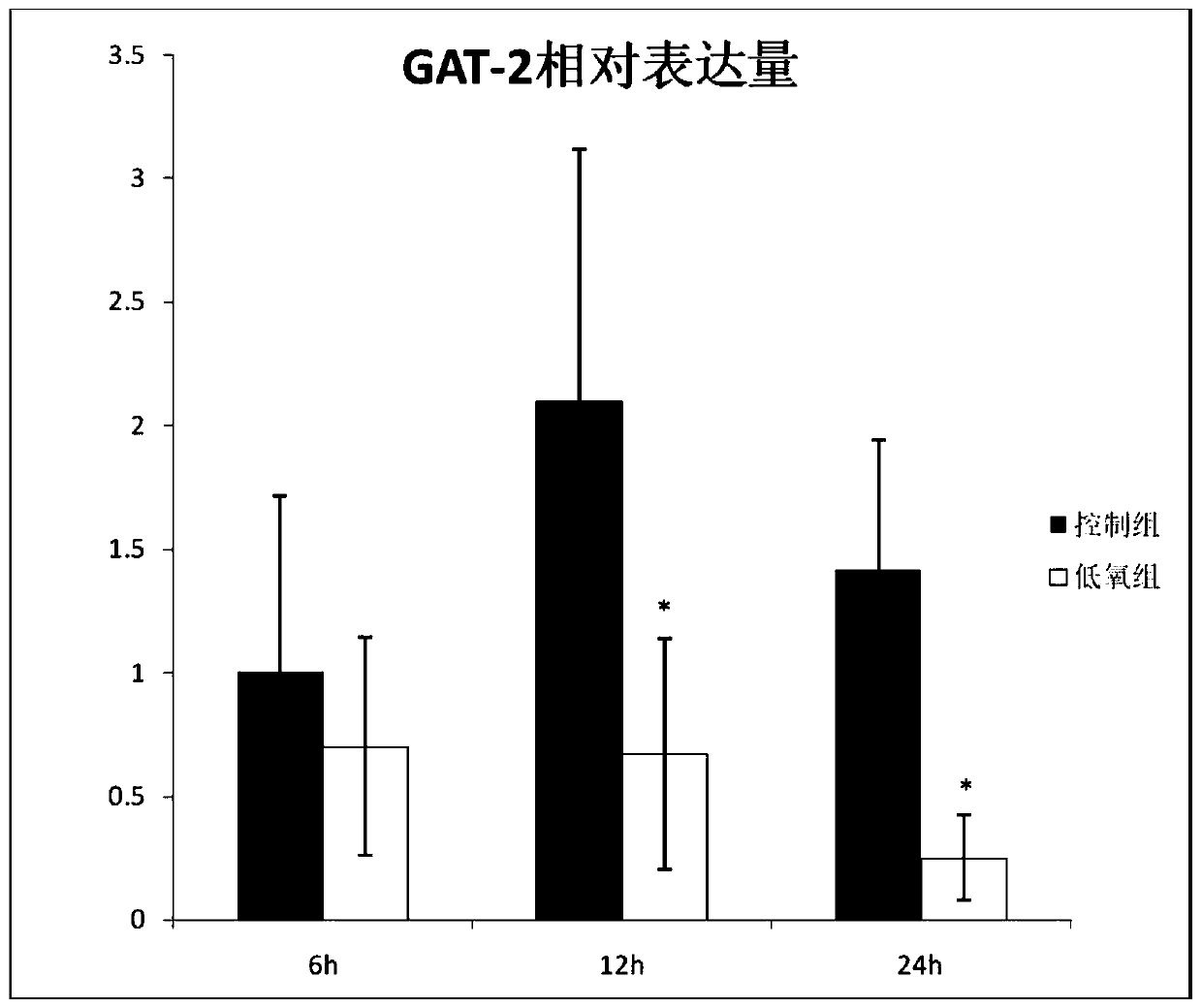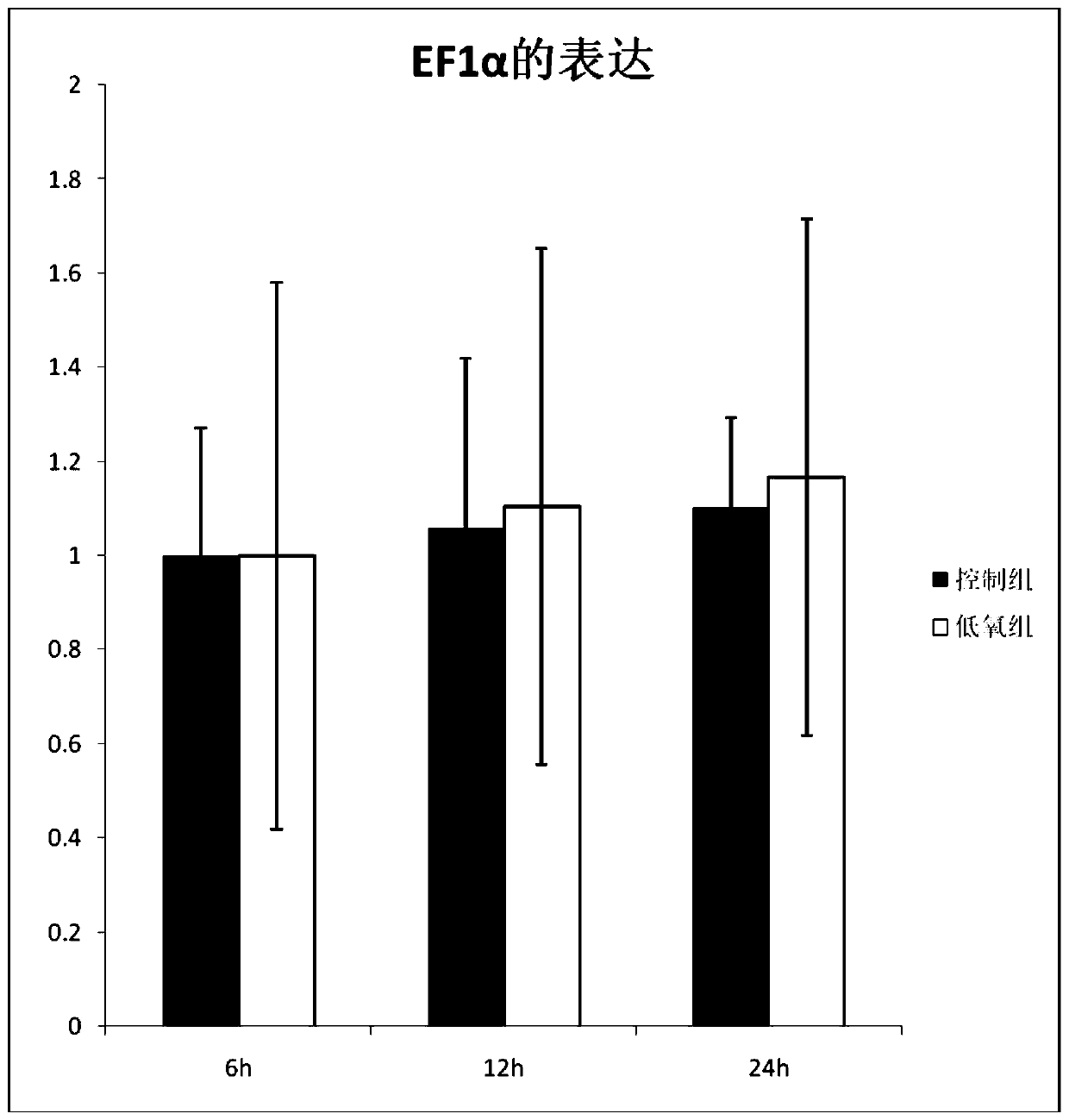A method for judging whether tilapia is in a state of hypoxic stress and its primers and kit
A stress state, tilapia technology, applied in the field of biochemistry and molecular biology, can solve problems affecting the growth and reproduction of tilapia, achieve good specificity and sensitivity, and good amplification efficiency
- Summary
- Abstract
- Description
- Claims
- Application Information
AI Technical Summary
Problems solved by technology
Method used
Image
Examples
Embodiment 1
[0031] The PCR detection method of the specificity of GABA transporter 2 gene in the spleen of embodiment 1 tilapia
[0032] The samples are the 6h, 12h and 24h samples of the control group and the hypoxic treatment group. The total RNA in the spleen of tilapia was extracted using Trizol, and the first strand of cDNA was synthesized using a reverse transcription kit (Dongsheng), which was used as a template for PCR detection of GABA transporter 2 gene and fluorescent quantitative PCR.
[0033] 1.1.1 Experimental treatment of tilapia and extraction of total RNA from spleen
[0034] (1) tilapia experimental treatment: the treatment method of control group (N=5) is to continuously fill the fish tank water body containing tilapia with oxygen, and the oxygen concentration is maintained at about 7.5-7.8mg / l; hypoxic group ( N=5) The treatment method is to continuously fill the fish tank water containing tilapia with gas, the gas is composed of oxygen and nitrogen, adjust the fillin...
Embodiment 2
[0050] Example 2 Utilize the specific primers of the EF1α gene synthesized in Example 1 and the specific primers of the GABA transporter 2 gene to carry out fluorescent quantitative PCR amplification, and analyze the expression of GABA transporter 2 in the spleen of the hypoxic group and the control group tilapia expression volume.
[0051] 1.1 Sample source
[0052] The samples used in Example 2 were 6h, 12h and 24h control groups and spleen total RNA of the hypoxic treatment group, and each treatment was repeated three times.
[0053] 1.1 cDNA synthesis and dilution for fluorescent quantitative PCR
[0054] The cDNA was synthesized as in Example 1, and the obtained cDNA product was diluted 10 times and then used for fluorescent quantitative PCR (2 μg RNA sample was reverse-transcribed and then diluted to 200 μl).
[0055] 1.2 Fluorescence quantitative PCR
[0056] Fluorescent quantitative PCR reaction system is calculated in 10 μl:
[0057]
[0058] Fluorescent quanti...
Embodiment 3
[0069] Example 3 analyzes primer specificity and sensitivity.
[0070] 1.1 Primer specificity experiment
[0071] 1.1.1 Ligation of PCR product to T carrier
[0072] The amplified products of the specific primers of the GABA transporter 2 gene of the control group in Example 1 were connected to the pGEM-TEasy vector (Promega), and the connection reaction system was 5 μl of 2x connection buffer, 0.5 μl of pGEM-T Easy vector, and T4DNA Ligase 1 μl, PCR product 3.5 μl, total volume 10 μl. After mixing, place in a 4°C refrigerator overnight.
[0073] 1.1.2 Preparation of ampicillin plate containing X-gal and IPTG
[0074] X-gal was prepared as a 20mg / ml stock solution in DMSO. Store in foil-wrapped tubes at -20°C to prevent damage from exposure to light. Preparation of IPTG: After dissolving 2g of IPTG in 8ml of distilled water, dilute to 10ml with distilled water. After preparation, filter-sterilize with a 0.22 μm filter and store at -20°C. Mix 40 μl X-gal and 5 μl IPTG an...
PUM
 Login to View More
Login to View More Abstract
Description
Claims
Application Information
 Login to View More
Login to View More - R&D
- Intellectual Property
- Life Sciences
- Materials
- Tech Scout
- Unparalleled Data Quality
- Higher Quality Content
- 60% Fewer Hallucinations
Browse by: Latest US Patents, China's latest patents, Technical Efficacy Thesaurus, Application Domain, Technology Topic, Popular Technical Reports.
© 2025 PatSnap. All rights reserved.Legal|Privacy policy|Modern Slavery Act Transparency Statement|Sitemap|About US| Contact US: help@patsnap.com



